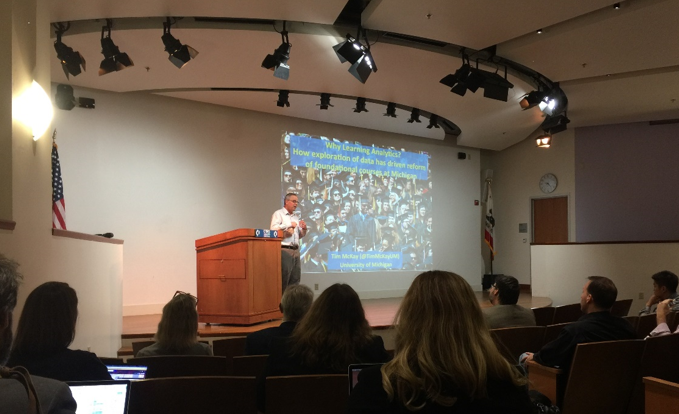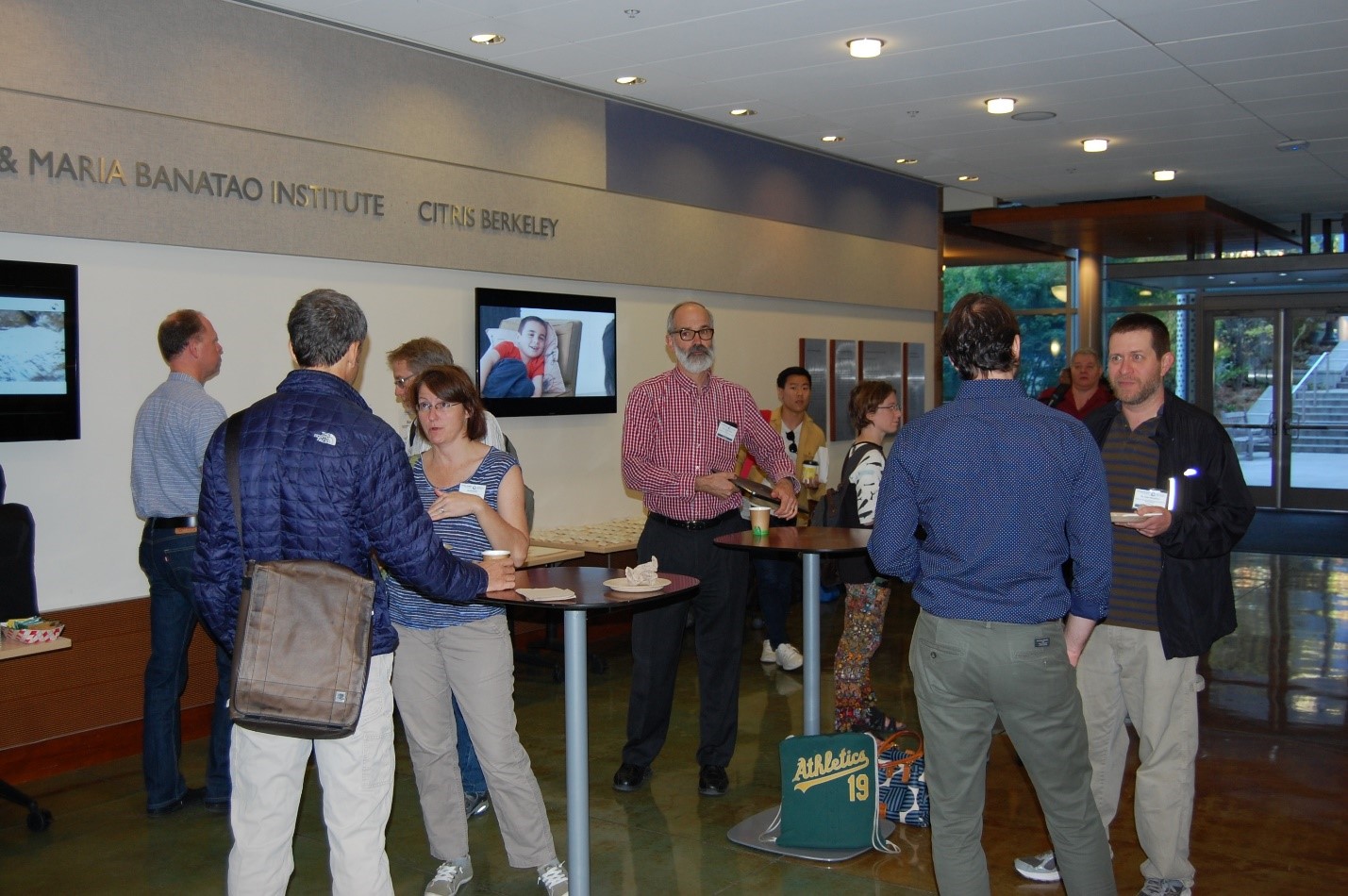By Guillermo Perez. Early in October, UC Berkeley faculty and staff came together to discuss an emerging concept in education, learning analytics, and what it means for Berkeley. The conversations that occurred inside and outside of Sutardja Dai Hall during the 2017 Learning Analytics Conference were a “community discussion.” Those were the words used by Larry Conrad, UC Berkeley’s chief information officer, to describe the exchange of ideas that took place at the day-long event. He was especially heartened by “…the focus on the academic aspects of the new technologies available.”
After all, he said, “Berkeley is known for its brilliance in teaching and learning, and the cross-pollination and storytelling that occurs at inter- and intra-campus events like this helps to remove the barriers that separate the various aspects of campus, allowing incredible collaborations to take place.”
Vice Chancellor for Undergraduate Education Catherine Koshland opened the conference followed by a keynote from University of Michigan faculty member and analytics advocate, Tim Mckay. They both stressed that learning analytics is about serving the student; at its heart, it aims to return the data to students in a safe, practical, and insightful way.
The day included breakout sessions which encouraged participants to examine a diversity of opinion and thoughts on various aspects of learning analytics. A panel composed of administrators and faculty from various parts of campus ended the conference.
The panel was a free-flowing dialog that navigated between the broad themes previously touched upon during the day, as well as a few deeper dives on issues such as the adoption of Gradescope into an organic chemistry class. As Jenn Stringer, chief academic technology officer and assistant vice chancellor for teaching & learning, explained, the most “disruptive” thing that a technology can do is give educators some time back with their students by helping faculty and graduate student instructors do what they were already doing, only better.
With discussions ranging from the “imposter syndrome” that students often experience, especially those from underserved communities, to a back-and-forth over the benefits of rethinking pedagogy and education in a socio-technical society, the panel was a fascinating capstone in a day filled with insights and learning.
The conference’s greatest success will be the increased visibility that learning analytics will have on campus, as well as the network connections and collaborations the day inspired. At a university as diverse and blessed with human capital as Berkeley, there really is no limit to what can be achieved when people assemble together to discuss the challenges and the opportunities that are changing classrooms around the globe.
As Vice Chancellor Koshland remarked in her opening, “from the cosmos to the classroom,” we can apply the research currently underway to look at tried-and-true methods from a new perspective. Here at UCB Educational Technology Services, we look forward to supporting our fellow campus partners wherever technology takes us into the future.
Guillermo Perez is a communications intern in the Educational Technology Services department at UC Berkeley.









Great idea to bring all campus constituents together to learn and brainstorm together around a topic that is often divisive or dismissed. A model I hope other UC’s will follow!